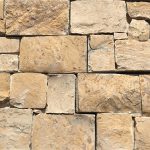Introduction
Cultured stone, also known as manufactured stone or faux stone, has become increasingly popular in the construction industry as a versatile and cost-effective alternative to natural stone. This artificial stone product has evolved significantly over the years, offering a wide range of styles, colors, and textures that closely mimic the look and feel of natural stone. In this article, we will explore the evolution of modern cultured stone, its advantages, applications, and the sustainability aspects associated with its production.

Evolution of Cultured Stone
The origins of cultured stone can be traced back to the mid-20th century when the first artificial stone products were developed as a more affordable and lightweight alternative to natural stone. These early versions of cultured stone were typically made from a mix of cement, aggregates, and iron oxides to create a stone-like appearance.
Over the years, advancements in technology and manufacturing processes have led to significant improvements in the quality and aesthetics of cultured stone products. Modern cultured stone is now made using a combination of lightweight concrete, pigments, and molds that are designed to replicate the intricate details and textures of natural stone. The result is a product that closely resembles the look and feel of natural stone, with the added benefits of being more versatile and easier to work with.
Advantages of Modern Cultured Stone
1. Cost-Effective: One of the most significant advantages of modern cultured stone is its cost-effectiveness compared to natural stone. Cultured stone is typically more affordable to purchase and install, making it an attractive option for homeowners and builders looking to achieve the look of natural stone on a budget.
2. Lightweight: Modern cultured stone is much lighter than natural stone, making it easier to transport, handle, and install. This lightweight nature also means that cultured stone can be applied to a wider range of surfaces without the need for additional structural support.
3. Versatility: Cultured stone comes in a wide variety of styles, colors, and textures, allowing for greater design flexibility and customization. Whether you're looking to create a rustic, traditional, or contemporary look, there is a cultured stone product to suit your needs.
4. Durability: Despite being lighter than natural stone, modern cultured stone is highly durable and can withstand the elements over time. Cultured stone is resistant to fading, cracking, and chipping, making it a long-lasting option for exterior and interior applications.
5. Easy Installation: Cultured stone is designed to be easy to install, whether you're a professional contractor or a DIY enthusiast. The lightweight nature of the product means that it can be installed using standard tools and techniques, saving time and labor costs.
Applications of Cultured Stone
Modern cultured stone can be used in a wide range of applications, both indoors and outdoors. Some common uses of cultured stone include:
1. mosaic tile : Cultured stone is often used as a decorative and protective cladding material for the exterior of buildings. It can be applied to facades, chimneys, pillars, and other architectural features to enhance the aesthetics of a structure and provide added insulation.
2. Interior Walls: Cultured stone can also be used to create accent walls, fireplace surrounds, and other interior features to add a touch of elegance and warmth to a space. The versatility of cultured stone allows it to be incorporated into various design styles, from rustic to modern.
3. Landscaping: Cultured stone is a popular choice for landscaping projects, such as creating retaining walls, garden borders, and decorative pathways. Its lightweight nature makes it easy to work with in outdoor settings, and its durability ensures that it can withstand the elements.
4. Fireplaces and Hearths: Cultured stone is an excellent option for creating custom fireplace surrounds, mantels, and hearths. The wide range of styles and colors available allows homeowners to customize their fireplace design to suit their aesthetic preferences.
Sustainability of Cultured Stone
In addition to its cost-effectiveness and durability, modern cultured stone also offers sustainability benefits that make it an environmentally friendly choice for construction projects. Some of the sustainability aspects associated with cultured stone include:
1. Resource Efficiency: Cultured stone is manufactured using a mix of natural and recycled materials, reducing the need for quarrying natural stone and minimizing waste. The production process for cultured stone also consumes less water and energy compared to natural stone production.
2. Longevity: The durability of modern cultured stone means that it has a long lifespan, reducing the need for frequent replacements or repairs. This longevity helps to minimize the environmental impact of construction projects by extending the life of the building materials used.
3. Energy Efficiency: Cultured stone can help improve the energy efficiency of buildings by providing additional insulation and reducing heat loss. This can result in lower energy consumption for heating and cooling, leading to reduced carbon emissions and lower utility bills.
4. Local Sourcing: Many cultured stone manufacturers produce their products locally, reducing the carbon footprint associated with transportation and distribution. By sourcing materials and manufacturing products locally, the environmental impact of cultured stone production can be further minimized.
Conclusion
Modern cultured stone has come a long way since its inception, offering a cost-effective, versatile, and sustainable alternative to natural stone. With advancements in technology and manufacturing processes, cultured stone products now closely mimic the look and feel of natural stone while providing additional benefits such as lightweight construction, durability, and ease of installation. Whether used for exterior cladding, interior walls, landscaping, or fireplace surrounds, cultured stone offers a wide range of applications for homeowners and builders looking to enhance the aesthetics and value of their properties. By choosing modern cultured stone, you can achieve the timeless beauty of natural stone with added convenience and sustainability.
